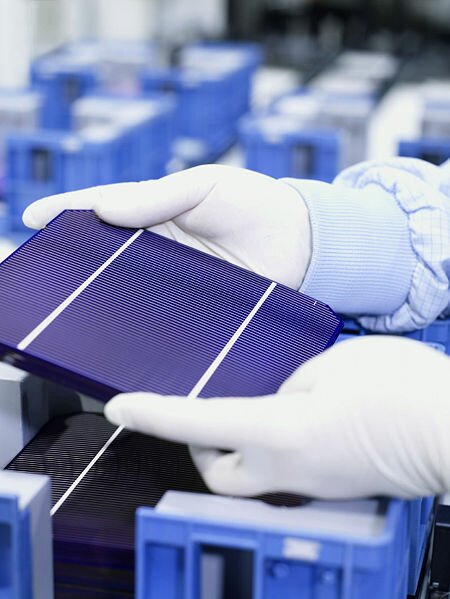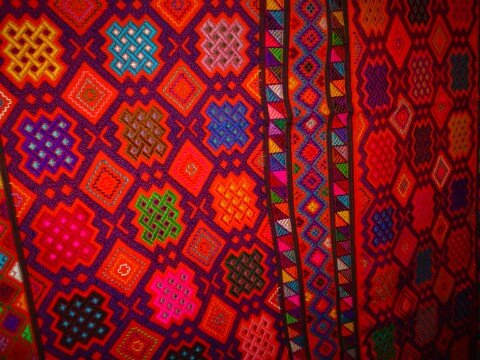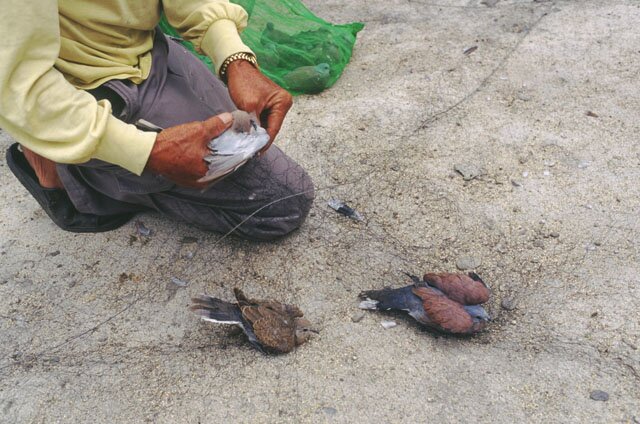BROWSE COUNTRIES/ TERRITORIES
10 Eco-Myths Busted
Thought you were being green? Let us burst your bubble and tell you how you really can make a difference for this planet.
Climate change and global warming have become household terms yet few of us have an intrinsic understanding of what those phrases mean. Consumer industries have taken advantage of this gap in knowledge and indulged themselves in what is known as “green washing”. Inventing products they claim to be eco-friendly or sustainable. But the primary attribute of climate change and global warming is over consumerism itself. Yes, we are in need of an alternative lifestyle and products, but what we also need is to simply reduce our consumption on the whole. Go down this list and explore the ways in which you can make a simple but very necessary difference.
Myth #1 Reusable shopping bags are kinder to the environment
They are all the rage now. Some come with clever eco taglines, others with cute cartoon prints. They all fold up to a tiny size to fit into your bag so you can whip it out anytime when you decide to go shopping. But the idea behind the reusable shopping bag has morphed from its initial plan of encouraging consumers to use fewer bags to now, buying another bag! Most popular brands of reusable shopping bags are made of vinyl, a kind of plastic resin made from chlorine and ethylene, both harmful chemicals to the environment, or of polyester, which like plastic remains in the environment for a long time. The raw materials of these bags are petroleum, just like plastic bags. So what you’re doing is buying 10 plastic bags in advance. The solution? If you need a shopping bag, get one that’s made of canvas. Natural materials like hemp or cotton mean less harmful materials went into the making of your product and less waste will come out of it when it is eventually disposed in the future. And buy only as many as you need.
Myth #2 Hybrid cars is the green transportation
They are all the rage now. Leonardo DiCaprio did the industry a huge favour when he endorsed hybrid cars with his sustainability stamp. Yes, they do help cut fuel emissions, but if you consider the materials that need to go into its manufacturing and the waste that comes out of it when it’s discarded, Hybrid cars suddenly don’t look so fashionable. Cadmium is a kind of metal that’s abundant on the planet. For a long time, it’s been used in the manufacture of plastics and steel but its use is generally decreasing in all other applications because of its high toxicity and carcinogenicity. Except in the production of nickel-cadmium batteries used in all hybrid cars. Toyota’s research plant in Canada has a 40km dead-zone radius in the dumpsite for its nickel-cadmium batteries. Their spokesperson said the environmental impact is currently small and we shouldn’t have to worry for the next 50 years. What he’s saying is it’s a problem for the next generation to deal with. Just because you’re hybrid doesn’t mean you’re green. Drive less. Get out there for a walk or buy a bicycle. Get a car with a modern-diesel engine - they are no longer the diesel engines of old with a dirty reputation.
Myth #3 Paper napkins save more energy than electric hand dryers
I was at a Climate Change conference once when a delegate commented in the restroom why hand dryers are still being installed when they are so energy intensive. Why not wipe your hands with a paper napkin and be done with it? While it may seem like a hand dryer uses more energy because you witness the consumption of energy as you are drying your hands, this is a misconception. It takes more water and energy to produce a single paper napkin than the amount of power used to dry a pair of hands within seconds. For every gram of virgin paper napkin, 75 grams of water went into making it. Even if you decide to use a cotton napkin, which may be reused 50 times throughout it’s lifespan, to make a gram of cotton requires 218 liters! The next time you decide to choose a napkin, think again if you need that much water to dry your hands.
Myth #4 Recycling is the way forward
It’s true, at least in Singapore, that recycling has had a favourable outcome. 30 per cent of waste that ends up in the landfill has been reduced because of recycling initiatives. But there’s still that remaining 70 per cent that we can’t vapourise. Recycling is great, but one of the 3 R’s that’s least spoken about is Reduce. That’s because it’s hard to tell someone not to buy something, especially when the economy depends on spending. It’s convenient to buy something then recycle it because it makes us feel better about ourselves, as if nothing went to waste. The truth is, the most important of the 3 R’s is Reduce. Even if we recycled everything we possibly could, it only sidesteps the real issue, and doesn’t solve the problem. Ninety-nine percent of products bought in the developed world are disposed within six months of its purchase. This means 99 percent of the stuff we harvest, process, transport, and mine are trashed within six months. How can we run a planet with that amount of materials throughput?
Myth #5 Renewable energy is sustainable energy
Ask any person on the street and they’d tell you the two are the same. In fact, some even use the two terms interchangeably. But they couldn't be more different. Renewable energy simply refers to any form of energy that we can grow or harvest, such as the sun’s energy or fuel from crops. Sustainable means, ideally, that the process in which the energy was harvested bears minimal impact on the environment and society from its manufacturing to its disposal. An example of a renewable resource that isn’t quite sustainable is solar power. Before we can use the sun’s energy, we have to catch it with photovoltaic cells. These cells, manufactured by coal fire, emit cadmium from its manufacture through its entire lifecycle. Like the cadmium in the batteries of hybrid cards, its carcinogenic, toxic, and non-biodegradable. It harms the environment and poses a health risk to those who work at its manufacturing and disposal sites. Not to mention, poisons the ground for the next generation. Solar energy for heat carries fewer environmental arguments; it's the conversion of light to energy via the cells that is the tricky bit. If you really want to “save energy”, be straightforward about it. Just use less.

Myth #6 Products or companies with an “Eco” label are environmentally responsible
No one should be able to tell you what is or isn’t green. Think for yourself. Be a discerning consumer and ask the right questions. If the answers you get aren’t satisfactory, look for another product. If you can’t find a product that’s sustainably made and you absolutely must have it, then at least purchase it from a producer that’s trying to find ways to offset their emissions or who’s putting in effort to try to make some sort of difference. Worse than being a victim or a perpetrator of climate change, is to be a bystander. Don’t be an indifferent consumer. The planet needs us. “Someone else” isn’t going to solve this problem. You are.
Myth #7 Incineration is better than land filling
Unfortunately for land scare countries like Singapore land-filling is not even an option and most waste gets incinerated before the ash, usually 30 percent of the original volume, gets dumped into a landfill. Incineration looks like a very practical option because it saves space but burning waste releases huge amounts of toxins into the atmosphere which rains back down on Earth, polluting water and threatening the health of people and the environment that resides close to incinerators. Dioxins certainly the most dangerous variety of gas emitted form incinerators. When released into the atmosphere through the burning process, these chemicals react with compounds in the air to form super toxins. Yes, chemicals in landfills can leach into the ground too and pollute ground water and damage surrounding wildlife, but it's certainly the lesser of two evils. The solution is: waste less. The less that gets dumped and burnt the better.
Myth #8 Leaving your computer on hibernate causes less wear and tear than turning it on and off
Apart from being a fire hazard when left on (for both Macs and PCs), putting your computer on hibernate or standby drastically wastes several hours of time life of the components (each component has it's own known lifetime stimated in hours). If you spend several hours doing nothing you kill hours when you could do something with the computer. In order to combat the reality of overheating and eventually burning, manufacturers have developed all sorts of cooling agents and fire retardant cases in which to house computers. Fire retardants and coolants often contain toxic chemicals like asbestos. Even on standby or hibernate, computers continue to consume power. Unless you're returning to your computer within an hour, turn your system off.
Myth #9 Going green will mean giving up my car.
Cars release carbon dioxide, so it's best to walk, cycle and use public transport where possible. But making simple changes to the way you drive can cut your emissions and save you money at the petrol pump. Shifting to a high gear as soon as possible, driving a little slower and maintaining a steady speed all make a big difference. Always check your tire pressure and get your car serviced appropriately.
Myth #10 Being environmentally responsible is difficult and it costs more
There's a grain of truth to this one, but only a grain. Ever walked into a store and looked at a product like a radio receiver retailing for $1.99 and wonder how it was possible something can cost so little? The economy requires us to keep shopping, and one way to do that is to keep prices low. In order to do this, companies externalise their costs. This is done in several ways - from harvesting timber outside of concession zones, to establishing manufacturing plants in countries that have poor or no environmental law and enforcement, to under paying their employees, to cutting on health insurance for the staff working at the store that you're shopping at. A lot of the stuff we get cheap is also due to government subsidies. Companies or countries that receive these subsidies are often attached to trade agreements or due in some way to nepotism. In the long term, what comes cheap to you initially, you pay for later with an intangible price such as health risks, welfare cuts, and as we've seen in the recent global recession, job losses and inflated prices. "It's only true in the short term in certain circumstances," says Senior Environmental Writer Cortese, "but certainly not in the long term."
Login or Register
 Debby Ng is an environmental photojournalist whose work has been published in several regional and international magazines, including the award-winning Lebanese magazine, Environment & Development. She has also worked with numerous Asian and international non-government organisations such as the TRAFFIC, World Wide Fund for Nature (WWF), World Society for the Protection of Animals (WSPA) and the Environmental Investigation Agency (EIA).
Debby Ng is an environmental photojournalist whose work has been published in several regional and international magazines, including the award-winning Lebanese magazine, Environment & Development. She has also worked with numerous Asian and international non-government organisations such as the TRAFFIC, World Wide Fund for Nature (WWF), World Society for the Protection of Animals (WSPA) and the Environmental Investigation Agency (EIA).
www.debbyng.net
www.pulauhantu.org
- Asian Dynasties and History
- Conservation of the Environment
- Definition: Culture
- Economy and Economics
- Food and Recipe
- Geopolitics and Strategic Relations
- Health and Body
- Of Government and Politics
- Religion and Practices
- Social Injustices and Poverty Report
- Society, Class and Division
- Unrest, Conflicts and Wars
































 Another Point
Another Point From Jerusalem to the West Bank
From Jerusalem to the West Bank
Comments
Computers on hibernate do not consume power.
"Even on standby or hibernate, computers continue to consume power."
On Hibernate, computers do not consume power. You can try it yourself, let it hibernate, and you can can remove it from the power source/battery completely. Plug in power again and you can restore it to it's original state.
On standby however, you can not remove it from the power source. Otherwise you will lose all your data.
Reference page: https://www.timeatlas.com/mos/Term_to_Learn/General/Understanding_Differe...
Post new comment